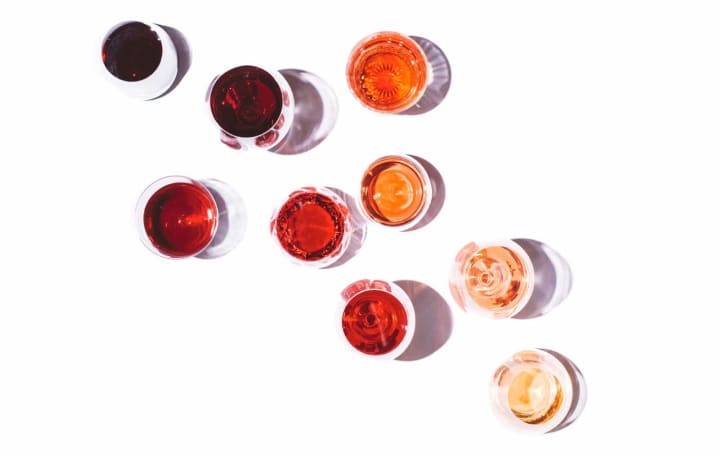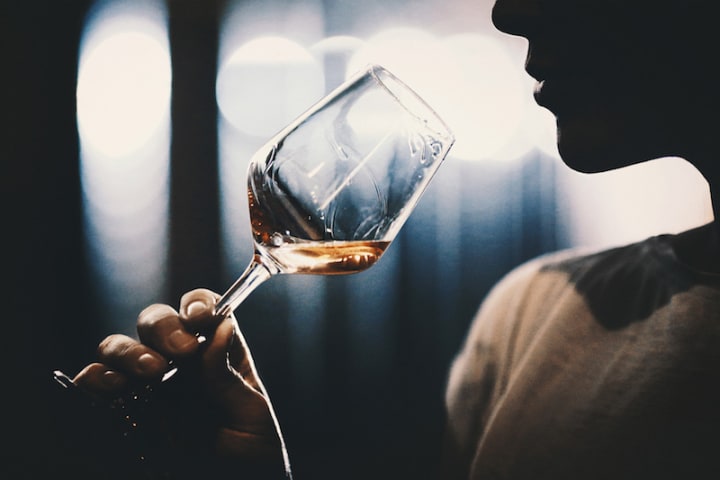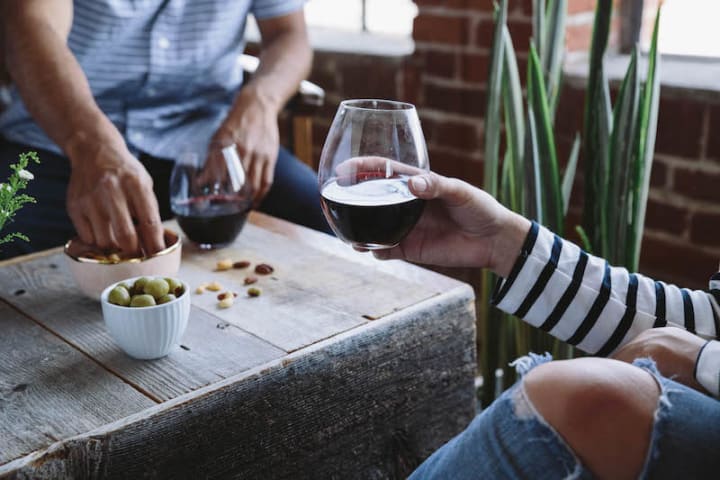The Ultimate Beginner's Guide to Drinking Wine
New to drinking, and want to learn all the hubbub about wine? This guide to drinking wine will allow you to unleash your inner sommelier.

Wine is not just a drink—it's a culture. Among Millennials, wine currently rests as the most popular alcoholic beverage out there. It's elegant, ritzy, and at the same time, still will get you blitzed. Wine drinking has become a major hobby and knowing how to navigate the wine scene is crucial if you want to avoid making an ass out of your self.
With all the different types of wine, wine and food pairings, and critiques, it's easy to make a mistake. It can be a lot to handle, especially if you're new to drinking. This guide to drinking wine will help you get yourself established as a beginner connoisseur.
Let's start with the basics of wine, shall we?

To start this guide to drinking wine, we're going to get to the very basic background of wine. Wine is one of the oldest alcoholic beverages known to man. It's made from fermented grapes—but you already knew that. (Hopefully!)
- Wine has three main colors: red, white, and rosé. Red wines are known for having a strong, robust flavor. White wines tend to be a little lighter. Rosé wines are a mix of the two.
- Wine grapes have "varietals." Each type of wine that's made will come from wine grapes. Each type of wine grape is called a varietal, with wines made from a single varietal often being called by the name of the type of grape. For example, Bordeaux wine is made with Bordeaux grapes.
- Wines that are made from multiple types of grapes are called wine blends. It's worth pointing out that the blending of wine grapes doesn't necessarily reduce the quality of the wine. However, purists might still be leery of it.
- Around 1,300 different species of wine grapes have been discovered. Only 150 are really commonly used.
- Wine flavors can be rated from sweet to dry, unless they're sparkling wines. Not all wines will have the same flavor. Wines go on a spectrum of sweet to dry. Sweet wines might be used as dessert wines, while dry wines are typically served at dinner. Wines that are slightly sweet (AKA semi-sweet wines) might also end up at dinner.
- Sparkling wines have sweetness ratings from Sweet to Extra Brut. Sweet sparkling wines are sugary as can be. Dry sparkling wines will still have some sugar in them. The ones with the least sugar are known as Extra Brut wines and may have no sugar whatsoever.
- Each category of wine has its own ideal serving temperature. Red wine is typically served at room temperature, or at 62-68 degrees Fahrenheit. White wine is typically served chilled at around 49-55 degrees, or around 10 to 20 minutes in a refrigerator.
Obviously, there is a lot more information out there that you should know, but this is the basics that everyone should be aware of before they start hitting up wine tasting sessions.
Before you crack open a bottle of wine, it's a good idea to prepare yourself with the right knowledge and equipment. Getting a good wine tasting kit is a good idea. At the very least, you should have a wine bottle opener, a wine glass, and a stopper. Ideally, you'll have the following:
- A wine bottle opener. You don't want to end up with cork bits in your wine. This opener will prevent that from happening.
- A wine stopper. If you don't finish off that bottle, it'll be spoiled. The stopper will prevent that.
- A wine aerator. Wine aerators introduce air into your wine and stir it up so that it releases aromas.
- A thermometer. If you want to serve wine at the right temperature, you'll need to have a thermometer.
- A foil cutter or knife. This is to remove the foil covering the wine stopper with.
- Wine glasses. Drinking out of the bottle or out of Dixie cups is frowned upon.
The kit from Wine Oak has all the things to properly open a bottle, which makes it a great choice for newbie wine enthusiasts.
Now, let's offer up a guide to drinking wine like a tasting expert.

Wine tastings are special. They are a time when you are supposed to enjoy all the different senses that wine can highlight. Here's a step by step on how to taste wine like a sommelier:
- Observe the wine. Take a look at the wine's colors in the light. Isn't it pretty?
- Swirl it. Swirl it around in the glass and watch the wine's little streams swirl around the glass. (Fun Fact: The streams that form in a wine glass when you swirl it are called 'legs,' and it's a sign of high alcohol content.)
- Smell the wine. Smell the wine and try to pick out all the delicate notes you feel. Does it have a tinge of blueberry? A strong hint of grass? Take note of it.
- Taste it. Now, here comes the final part of wine tasting: actually putting it in your mouth. A lot of tasters prefer to let it sit in their mouth for a while, but that's not necessary.
- In some circles, people will spit out wine once they've tasted it. This isn't mandatory in the vast majority of cases. If it is, they will have a bucket for spittle.
The entire idea behind tasting wine is to take a deeper look at how it plays with your senses. Really take your time savoring it, and you'll be able to enjoy it more. No guide to drinking wine would be complete without emphasizing that you should enjoy it.
Any guide to wine drinking at parties will tell you that there are certain things you just don't do when you're at a formal wine tasting. Here are some important tips to remember:
- Do not spit out wine unless there's a spit bucket. Spitting out wine in a party without buckets tends to be seen as a sign that you didn't enjoy the wine.
- Hold the glass by the stem, not the bowl. If you have stemless glasses, holding them like a normal glass is fine. However, most wine tastings will have stemmed glasses.
- Drink, don't gulp. Gulping is taking things pretty hard.
- Do take notes about each wine that you drink. We suggest bringing along a wine tasting notebook and pen to get complete, tidy notes. After all, you might want to review them just in case you want to buy a bottle later on.
- Understand that there are no right or wrong answers with wine tasting. Everyone tends to sense something a bit different when it comes to wine. There's no "wrong" answer; just what you might experience.
We also should offer a guide to drinking wine that hasn't gone bad.

Believe it or not, wine can go bad. Whether it's due to improper storage or due to other factors, it is possible to buy a wine that hasn't really gone over well. You shouldn't drink wine that's gone bad, because it will taste bad and possibly make you sick.
Signs of a bad wine include:
- The flavor or smell of cork. This means that a wine is "corked," and has absorbed the flavor of the cork into it.
- Smells that remind you of cardboard, a wet dog, or vinegar. This suggests that impurities have caused the wine to turn bad, mold, or acidify.
- Bubbles in wine that aren't actually supposed to be bubbly. The excess air is often caused by impurities.
- Wine that is a deep brown color. Wines shouldn't really be brown unless they are ports, fortified wines, or extremely aged. If it's brown, you probably shouldn't drink it down.
One thing that makes wine very different from whiskies, cocktails, and other drinks is how structured pairing suggestions can be. Finding the best wine and food pairings isn't always easy, and truth be told, it's not an exact science.
Though it's not an exact science, there are some pretty good rules to follow that can help you figure out the best match for your dinner. Here are some of the most common rules of thumb:
- Red meat goes with red wine, white meat goes with white wine. This is the oldest pairing trick in the book, and it generally works well. If you aren't sure what to pair, this is the best way.
- Sweet wines tend to pair well with foie gras, salads, and salty foods. The sweetness offsets the food's flavors.
- Seafood goes very well with dry white wines. The light-bodied flavors tend to mesh well and bring out the salinity of the seafood while downplaying fishiness.
- Asking a waiter at a restaurant will often get you a good pairing. Of course, you can also consult a book like Wine Folly can also offer up the same kind of good advice.
- Dessert wines often will go well on their own, with cheeses, or with fruits. Sugary tends to be the flavor profile of dessert wines. If you're not ready for that, you may want to skip on dessert wines.
Though some wine enthusiasts will hate on you for it, wine cocktails are really delicious. That being said, wine cocktails are more of a "casual thing" in the eyes of many people out there.
If you do choose to drink them, understand that it's totally okay. Any bottle of wine you buy is a bottle that should be enjoyed as you see fit. A good rule of thumb would be to try to drink them solo before you try to pair them with foods.
Making wine cocktails is an art in and of itself. A nice cocktail recipe book, such as the one above, can help you find the best wine cocktails for your palate.
Finally, let's have a guide to drinking wine in the most enjoyable ways possible.

Though every guide to drinking wine like a pro will tell you all these rules on how to best enjoy wine, the truth is that there's only one person you should work to please: you. As you continue to experiment with wines, you'll find a style that you enjoy.
About the Creator
Sasha Konikovo
Born in the Ukraine and currently a citizen of New York City, Sasha Konikovo has become obsessed with makeup, fashion, and anything that keeps her svelte figure looking sharp. She hopes to marry a billionaire and have a lifestyle like Paris Hilton soon enough.






Comments
There are no comments for this story
Be the first to respond and start the conversation.